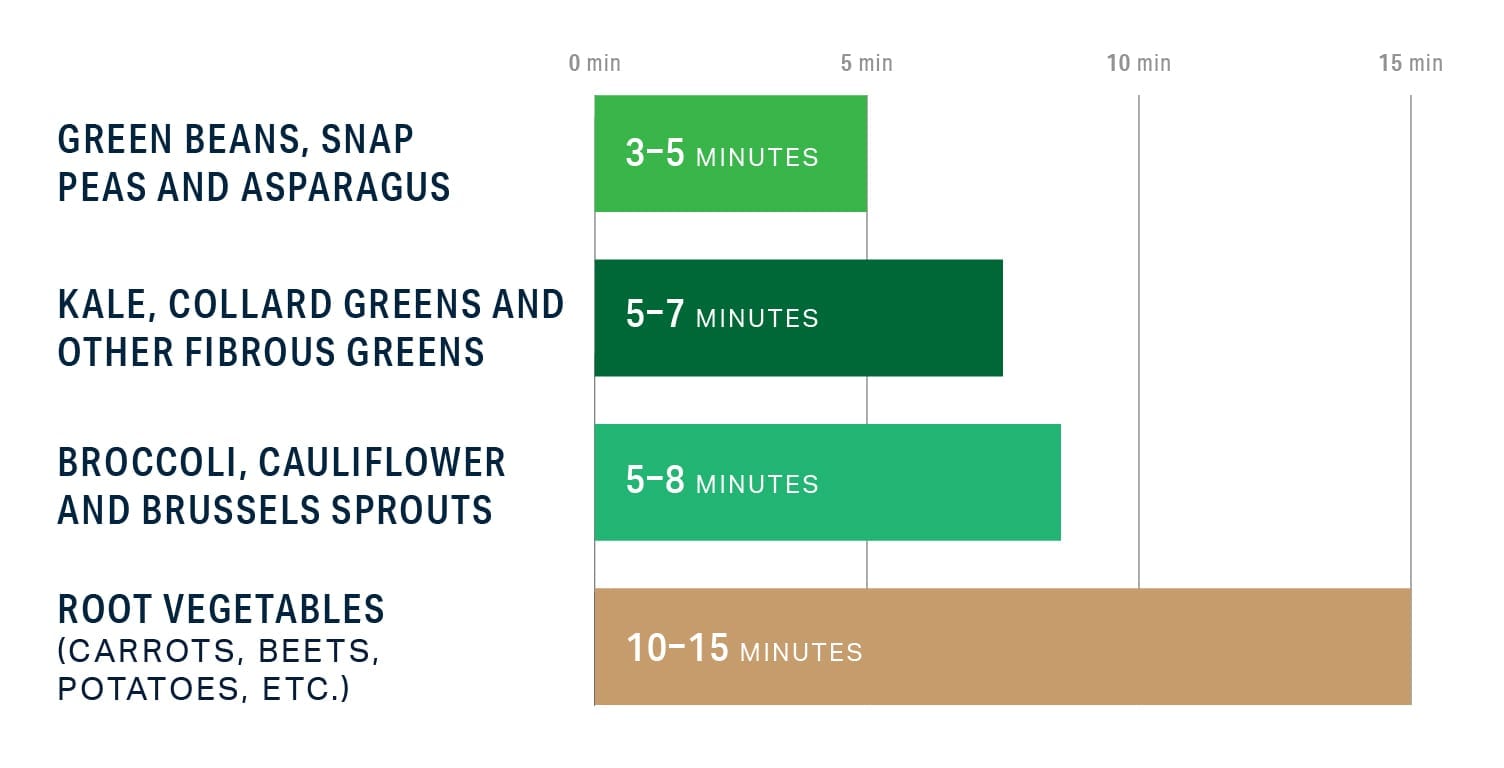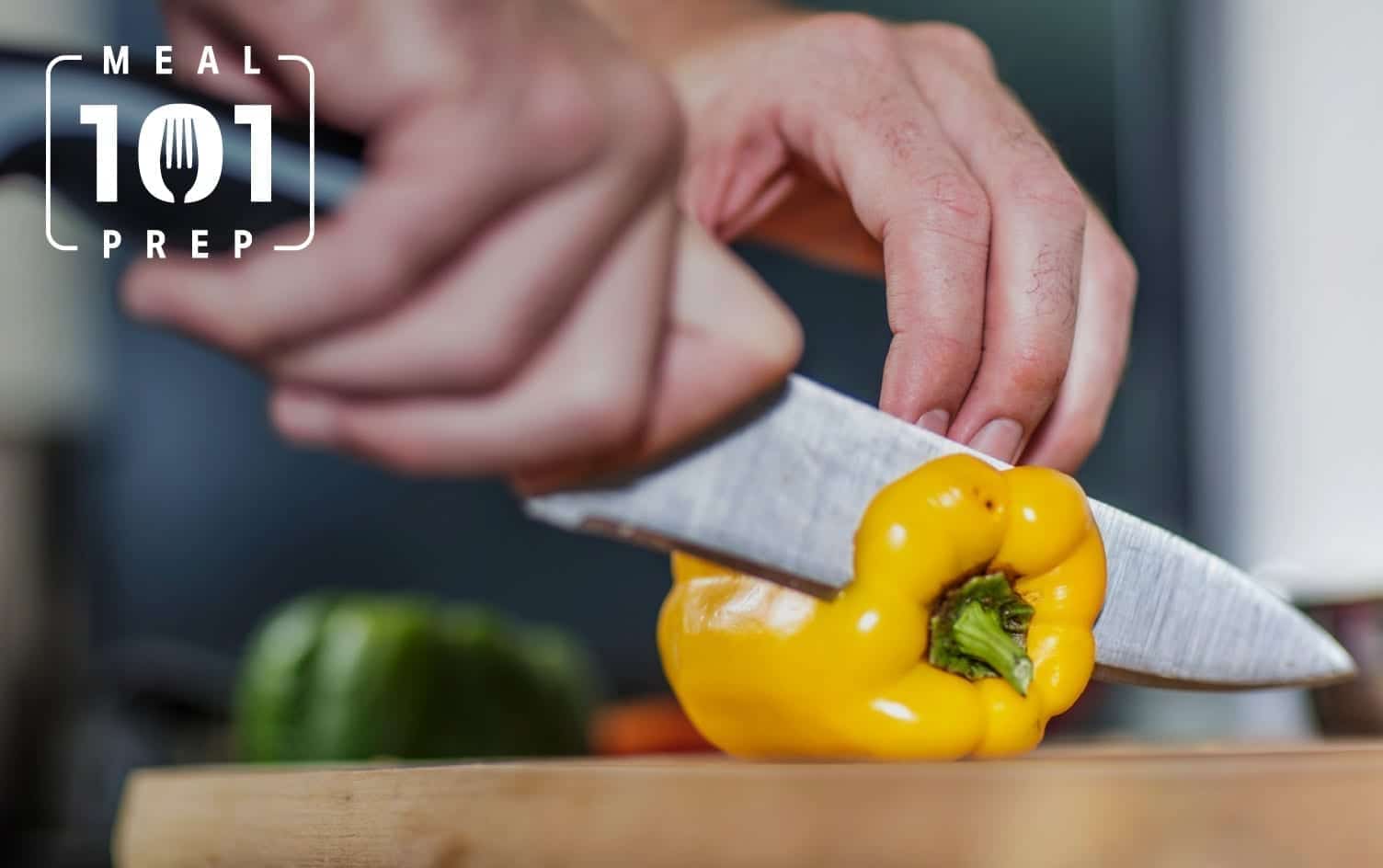
Planning ahead and cooking a variety of veggies not only keeps things more interesting, but it also simplifies healthy eating. Getting in the habit of regularly meal prepping veggies helps you save time and reach your health goals faster. From raw to roasted, there are plenty of ways to cook veggies to fit your taste preferences and time constraints.
Read more on how to batch cook proteins and grains, make marinades and use leftovers.

If you’re planning to eat salads throughout the week, it’s helpful to know how to wash, cut and store your greens in a way that keeps them fresh for as long as possible.
How to prep: Start by washing greens with very cold water, and then dry with a salad spinner or by laying them out on paper towels. The less water left on your greens before storing, the less likely they are to get mushy. It’s best to store the leaves whole, and then cut or tear them when you’re ready to throw a salad together. If you prefer to chop them up ahead of time, use a knife to cut fibrous greens like kale and collards and your hands to tear more delicate leaves like romaine and bibb lettuce (a knife causes the edges to brown).
How to store: Store the leaves in a large, sealed container, with a paper towel on the top and bottom to catch any moisture.

Steamed vegetables get a bad rap, but when you know how to steam properly — al dente, with a little bit of salt — it can yield tasty results. This method works best for cruciferous vegetables like broccoli and cauliflower, or sweeter ones like carrots and beets.
How to steam: Wash and peel (if necessary) the vegetables, then cut them into bite-sized pieces. Next, fill a large pot with about an inch of water, salt the water and bring it to a boil over high heat. If you have a steamer basket (recommended), place it in your pot and then fill it with as many veggies as will fit. Reduce the heat to a simmer, cover the pot, and let your vegetables steam. Cooking times vary by vegetable, but here are some estimates:

How to store: First, you’ll want to chill them. You can do this by setting up an ice bath (half ice, half water) and transferring the steamed veggies into it right away. Once they’re cold, transfer them to an airtight container and store in the fridge.

Done right, sautéed vegetables come out similar to steamed — al dente, slightly salty — but have the added flavor benefit of a bit of oil and maybe some browning. The time it takes to sauté depends on the vegetable you’re cooking, but the process for all for them is roughly the same.
How to sauté: Wash and peel (if necessary) veggies, and cut them into bite-sized pieces. Heat a large skillet over medium-high heat, then add a thin layer of oil and let it get hot. Add just enough vegetables to cover the bottom of the skillet, but don’t add so many that they’re piled up. Season with salt, pepper and any spice you desire, then cook them, stirring often until they’re brightly colored and a little soft. Taste a few pieces along the way to test for doneness.
How to store: Transfer the cooked vegetables to an airtight container and let them cool to room temperature, then store them in the fridge.

The dry heat from the oven brings out the natural sugars and can lead to delicious browning and caramelization.
How to roast: No matter what kind of vegetable you’re roasting, a 425°F (218°C) oven is generally the best bet. Peel your veggies (if necessary), then cut them into pieces that are roughly the same size. One-inch pieces are ideal because they’re bite-sized, but the most important thing is that they are uniform for even cooking. Toss with salt, pepper and enough oil to lightly coat. Then, spread over a sheet pan, making sure they fit into a single layer. The less crowded your pan (the more space between the pieces), the easier it will be to get that perfect browning, because it reduces the risk of steam.
While you can roast pretty much any vegetable, the cooking times vary. If you’re using a 425°F (218°C) oven and you’ve cut your vegetables into 1-inch pieces, you should check on them after 15 minutes. If they’re not done, let them go for another 10 minutes and check again. Softer vegetables like broccoli and cauliflower cook more quickly, while harder ones like potatoes and beets take longer.
How to store: Once your vegetables are cooked, let them cool to room temperature on the sheet pan. Then, transfer to an airtight container and store in the fridge.

If you have an Instant Pot, you can use it to save some time and hassle. Use the pressure-cook setting, and you’ll get vegetables that taste steamed but take even less time.
How to cook: Prep the veggies as you usually would, cut them into bite-sized pieces and follow the approximate time guidelines below, using the pressure-cook setting:

How to store: Transfer the cooked vegetables to an airtight container and let them cool to room temperature, then store in the fridge.
HOW TO USE MEAL PREPPED VEGGIES
The possibilities are endless when it comes to batch-cooked veggies. Snack on them raw, toss leafy greens and a handful of roasted vegetables into a salad, serve sautéed veggies over rice with a lean protein or toss steamed vegetables in vinaigrette for a tasty side dish. If you need a little inspiration, here’s a foolproof guide to eating more veggies.




